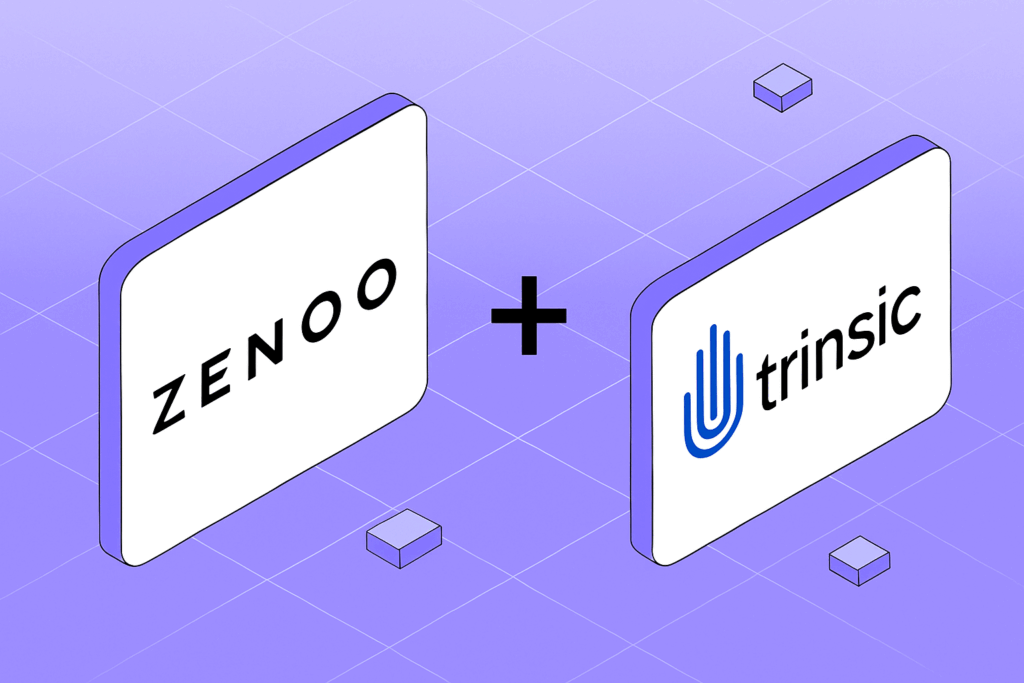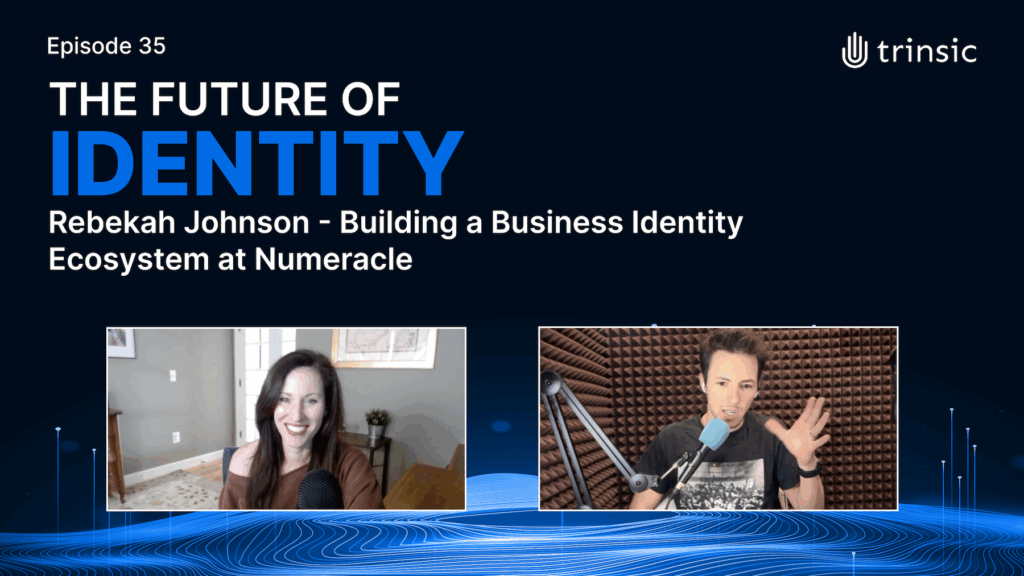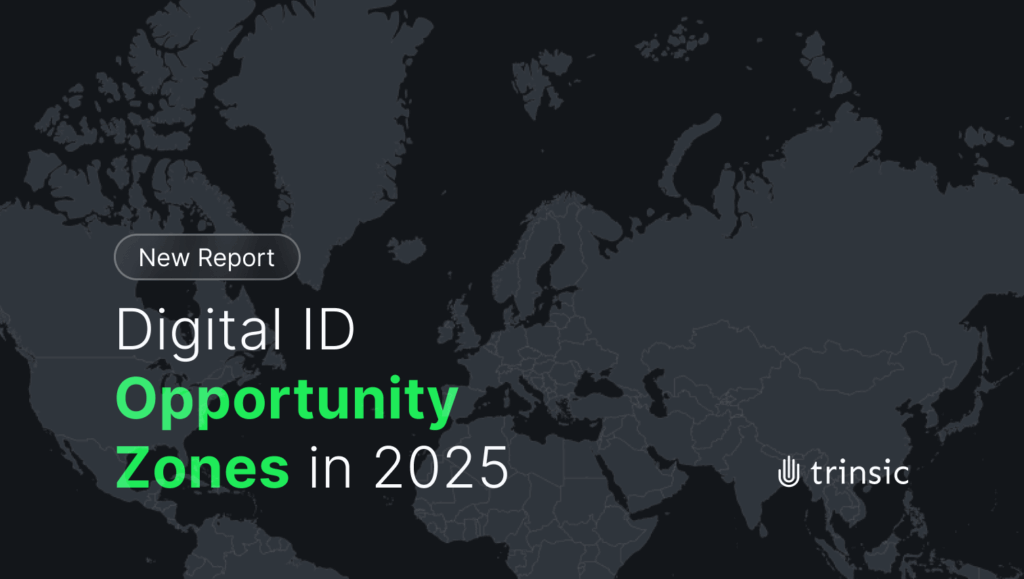In 2019, Trinsic launched the first verifiable credentials platform, enabling developers to easily implement digital trust into any application for the first time. Since then, our APIs have been used by more than 2,000 developers and supports some of the largest verifiable credentials implementations in the world.
Through this period of growth and by working closely with our customers, we’ve learned what is needed to take our platform to the next level, and we’re thrilled to announce the largest upgrade to our platform since its launch. The next version of the Trinsic platform is 10x as accessible, 100x more performant, and 1,000x more scalable. And it is available now. Keep reading to see how you can start using it.
Introducing Trinsic Ecosystems
Before diving into the specifics of the platform upgrade, we need to introduce a new term. Up to this point, we have referred to Trinsic’s APIs for verifiable credential exchange as simply the Trinsic platform. Moving forward, we will refer to these APIs as Trinsic Core. We decided to name our API platform Core because it underpins all of our current and future products. Trinsic Core is infrastructure for digital trust in the same way that Stripe is infrastructure for payments or Twilio is infrastructure for communications.
Our original tech stack, Trinsic Core v1, is what our customers use today and as mentioned above, supports some of the largest verifiable credentials implementations in the world. Core v1 uses JSON credentials, CL signatures native to the Hyperledger Indy SDK, Hyperledger Aries exchange protocols, and DIDComm v1.¹
But, as the size and complexity of our customers’ use cases grew, there were scaling and performance requirements that the original open source codebases for verifiable credential exchange listed above were not able to meet. And that is why we have built Trinsic Ecosystems—the largest upgrade to our digital trust infrastructure to date.
To be clear, we will continue to support Trinsic Core v1 which is generally available now by signing up for a free Trinsic Studio account. With that said, we invite all current and new customers to try out Trinsic Ecosystems and experience the future of digital trust infrastructure.
What's new with Trinsic Ecosystems
Trinsic Ecosystems delivers the scaling, interoperability, and performance enhancements our customers, and the world at large, need to deploy verifiable credentials in production. It uses the latest standards that are emerging as the de facto, next-generation standards for verifiable credential exchange. These include JSON-LD credentials, BBS+ signatures, and decentralized identifiers. To learn a little more about each of these specifications, click on the drop-down below.
We follow the Verifiable Credential Data Model, so there’s no vendor lock-in when using the Trinsic. We use an encoding format called JSON Linked Data so that the data within a credential can be described using self-contained URIs.
The BBS+ Signature Suite provides the capability to perform zero-knowledge proof disclosures on datasets. When used in tandem with a verifiable credential, these signatures empower individuals to prove things about themselves with minimal data disclosure.
Taken from the Verifiable Credential Data Model, a decentralized identifier is “a portable URL-based identifier, also known as a DID, associated with an entity. These identifiers are most often used in a verifiable credential and are associated with subjects such that a verifiable credential itself can be easily ported from one repository to another without the need to reissue the credential. An example of a DID is did:example:123456abcdef”.

The Trinsic Ecosystems difference
For verifiable credentials to achieve adoption at scale, they need to be easy to implement for developers and easy to adopt for end users. As we move forward with Trinsic Ecosystems, we are getting closer to making the user experience of sharing verifiable credentials as seamless as using Apple Pay. Trinsic Ecosystems has the following advantages that will help make this a reality:
- Scalability: Trinsic Ecosystems can support tens of millions of people using their credentials several times per day.
- Performance: Trinsic Ecosystems enables near-instant verifications (<200 milliseconds).
- Accessibility: Trinsic Ecosystems makes it so that digital wallets are available across devices, browsers, and platforms. People will be able to access their credentials from any device, and developers no longer have to write an entirely new framework from scratch to integrate digital wallet capabilities using their preferred language.
- Built for Ecosystems: Trinsic Ecosystems was developed from the beginning to be the best product for developers who wanted to build digital trust ecosystems.
- Unopinionated technology: While our initial beta release supports the latest standards such as JSON-LD verifiable credential data model, BBS+ signatures, and DIDComm v2 messaging formats, Trinsic Ecosystems is architected from the beginning to be agnostic to ledger, transport, payload, signature scheme, etc. That means over time, Trinsic will easily allow developers to tailor their preferred technical standards to their ecosystems.
Demo video
Get your hands on the future of digital trust
Trinsic Ecosystems is now available for anyone to get started for free.
Notes
- We list these technical specifications out in case you care to know what they are, but if not, that’s okay too. We worry about knowing the ins and outs of these specifications, so you don’t have to.
- This post was updated in December of 2022 to clarify that our v2 platform is called Trinsic Ecosystems.









